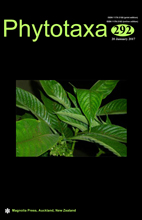Abstract
The identification of Auricularia species has previously relied on the examination of macroscopic features of mushroom samples collected in Thailand. These features may vary with age, light exposure, moisture and other factors, making such identification prone to error. This study uses morphological characteristics and molecular data to improve upon previous classifications of Auricularia species. Fruiting bodies collected during recent field excursions and previous collections from herbaria were examined and sequenced for two loci, viz. ITS and rpb2. Auricularia asiatica is described as a new species based on both morphological characteristics and molecular data, and is introduced with a full description, illustrations and colour photographs. Auricularia cornea and A. villosula are described as new records from Thailand. A combined ITS and rpb2 phylogenetic tree is provided, showing the placement of five Auricularia species found in Thailand.

